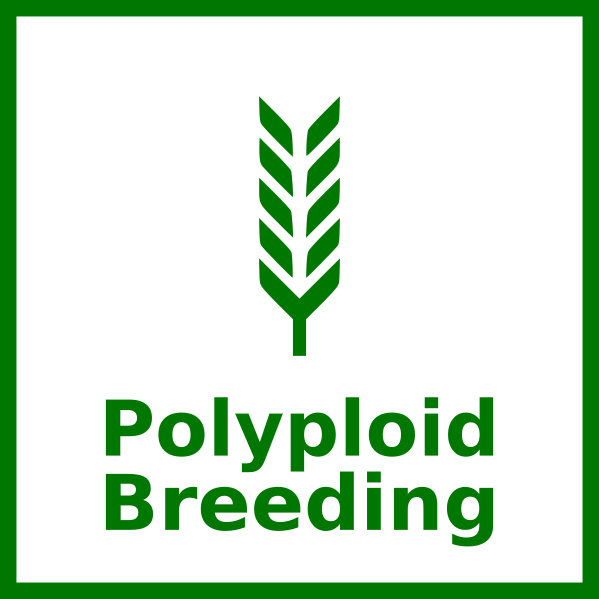Polyploidbreeding

PRIN 2022 (Settore LS2)
Start date: 28 September 2023
End date: 27 September 2025

Using QGIS: basic introduction - 1
by Filippo Biscarini
QGIS TUTORIAL - 1
With this post, we begin a super-elementary tutorial on the use of the software package QGIS for the processing of geo-referenced image data: QGIS is a free and open-source framework for geographic information system (GIS) data.
A few introductory assumptions:
- we are focussing on the processing of agricultural field images from drone phenotyping
- the starting point is therefore an orthomosaic image file generated by combining multiple overlapping photos taken by a camera mountd on a drone
- we take the standpoint of RGB camera and RGB image files (three channels): things will be a bit different with image data from thermic or multi-spectral cameras
- we used QGIS installed on a Debian/Ubuntu Linux distribution (some details may be a bit different if you use another operating system)
For the installation of QGIS and for technical details, you can have a look at the official documentation (here).
There are two basic types of image files that are processed in QGIS: 1) raster images (pixel based images), and 2) vectorial images. In this tutorial, in a first instance we will focus on raster images.
Splitting the orthomosaic in subimages
Let’s say that our objective is to extract interesting areas from the orthomosaic: in the case of the polyploidbreeding project these will be
the different field plots where different accessions are planted or treatments applied.
Geo-referenced orthomosaic image files are typically in the .tiff format (tagged image file format),
accompanied by a .tfw file of GIS coordinated (TFW).
For example, we can look at the image below, where we have three geo-referenced plots that need to be separated for further processing.
1. Import the orthomosaic in QGIS
First, we suggest that you create a QGIS project: this will make it easier to handle input files, output folders and option setting. To create a project, once you opened QGIS, you will use the main menu (top bar):
- i) you click on
Project>New - ii)
Project>Save: choose a location (directory) and a name where to save the project; this will create a.qgzfile - iii) useful tip: go to
Project>Propertiesand sett theProject homefolder; this will make it much easier to browse for input/output files and folders
Now that we have our QGIS project, we can import the orthomosaic image file (a single image of the whole agricultural field):
from the software menu bar: Layer > Add Layer > Add Raster Layer, and select the input .tiff/.tif image file.
2. The shape file
The second ingredient of geo-referenced image file analysis is the shape file: this is a file that indicates the boundaries of the areas of interest in the image file, i.e. the experimental plots in our example.
The shape file may be already available (from the preprocessing of drone-phenotyping images), or can be designed by the user. We take this second case, in this first post on QGIS and the processing of orthomosaic image files.
To make a new shape file in QGIS we can do the following:
Layer>Create Layer>New Shapefile Layer:- here you specify the file name (and location/filename of where to save it for future use)
Geometry type: e.g.Polygonif you need to draw an area (like in the case of field sub-plots)- define additional attributes:
New field: i) id (default); ii) name; iii) etc.
- draw shapes (ares); for this we use the Editing tool:
Layer>Toggle Editing- now click on the
Polygonicon on the top toolbar - using the mouse, now left-click on the raster image, in the point where you want to start drawing your shape
- with the mouse, keep left-clicking until you have completed drawing your shape (area)
- to stop drawing, right-click with the mouse
- a dialogue box will now appear: you must add the attributes, i.e. the
idandnameof each subplot - save the shape file:
Layer>Save Layer Edits
You may want to make sure that, besides having created the shapefile layer and saved it within your project, you save the sahpfile layer to an external shape file, for future use.
3. Clip the raster image based on the shape file
Now that we have the orthomosaic raster image file and the shape file, we can split the orthomosaic into the subplots of interest based on the shapes drawn in the shape file. To do so, and save separate files for each subplot, we first need to select the shape (area) to export:
- in the
Layerspanel (bottom-left), right-click on the shapefile layer, and selectOpen Attribute Table; - in the pop-up
Attribute Table, select the desired shape by clicking on it (it will be highlighted, e.g. in blue) - now, from the top menu:
Raster>Extraction>Clip Raster by Mask Layer:- select the raster image as input layer
- select the shapefile layer as mask layer
- *flag the
Selected feature onlyoption (this is important: it will clip only the selected shape from the Attribute Table) - click on
Run
- once the clipped shape has been extracted, you have to save it to an external file, by right-clicking on the corresponding layer (bottom-left panel of the GUI), and selecting
Save as
Now we have three image files for the three subplots in the original orthomosaic image: job done!
What’s next?
All right, we learnt how to read the orthomosaic, make the shape file and use it to split the orthomosaic into the relevant subplots. Still, a couple of challenges are immediately obvious:
- the process outlined above is pretty laborious: can we automate the splitting of the orthomosaic into the subplot images?
- the geo-referenced orthomosaic is tilted (this depends on the GIS coordinates): is there a way to rotate it if our objective is to extract the subplots?
We’ll deal with these issues in our next post of this introductory tutorial to QGIS.
tags: qgis - images - informatics



